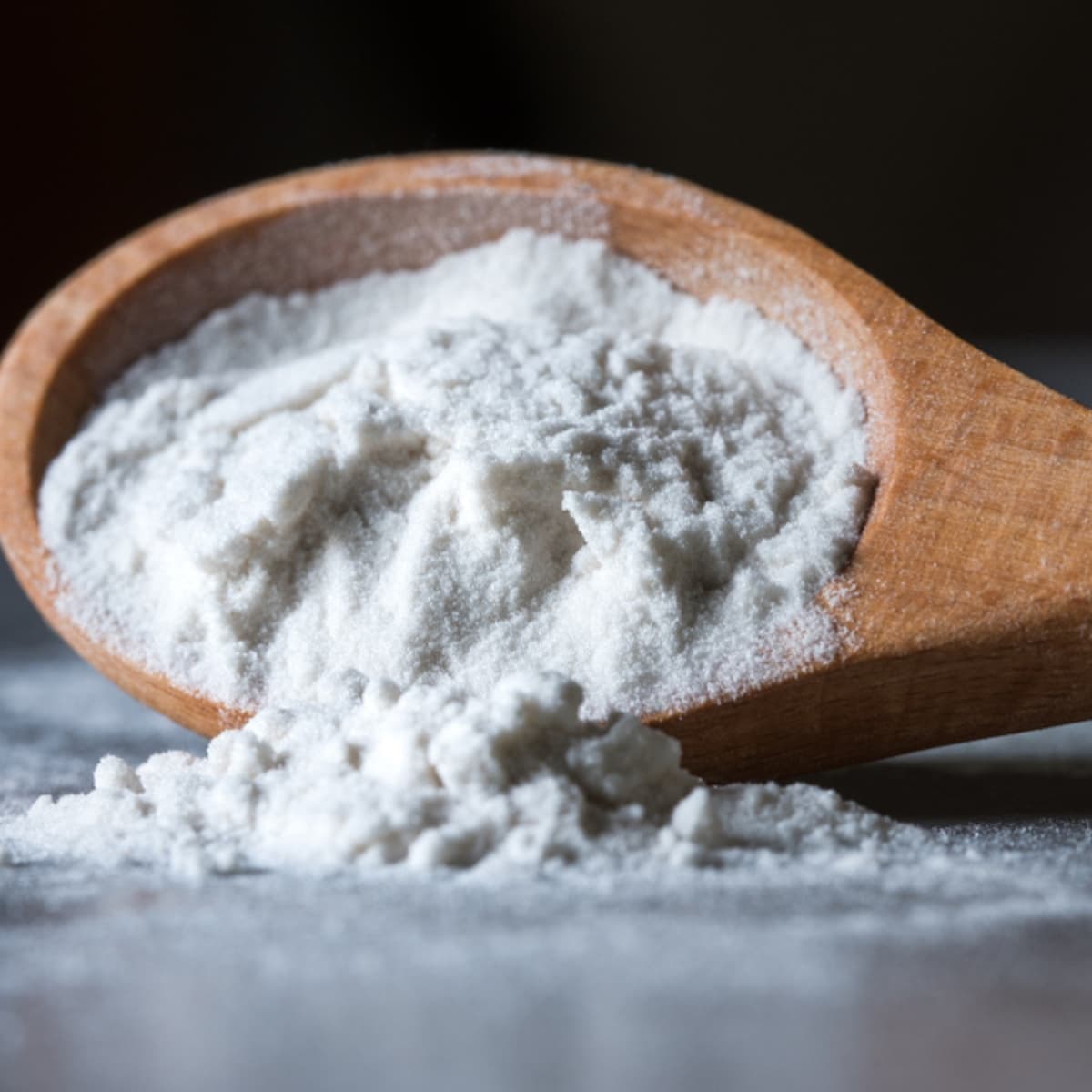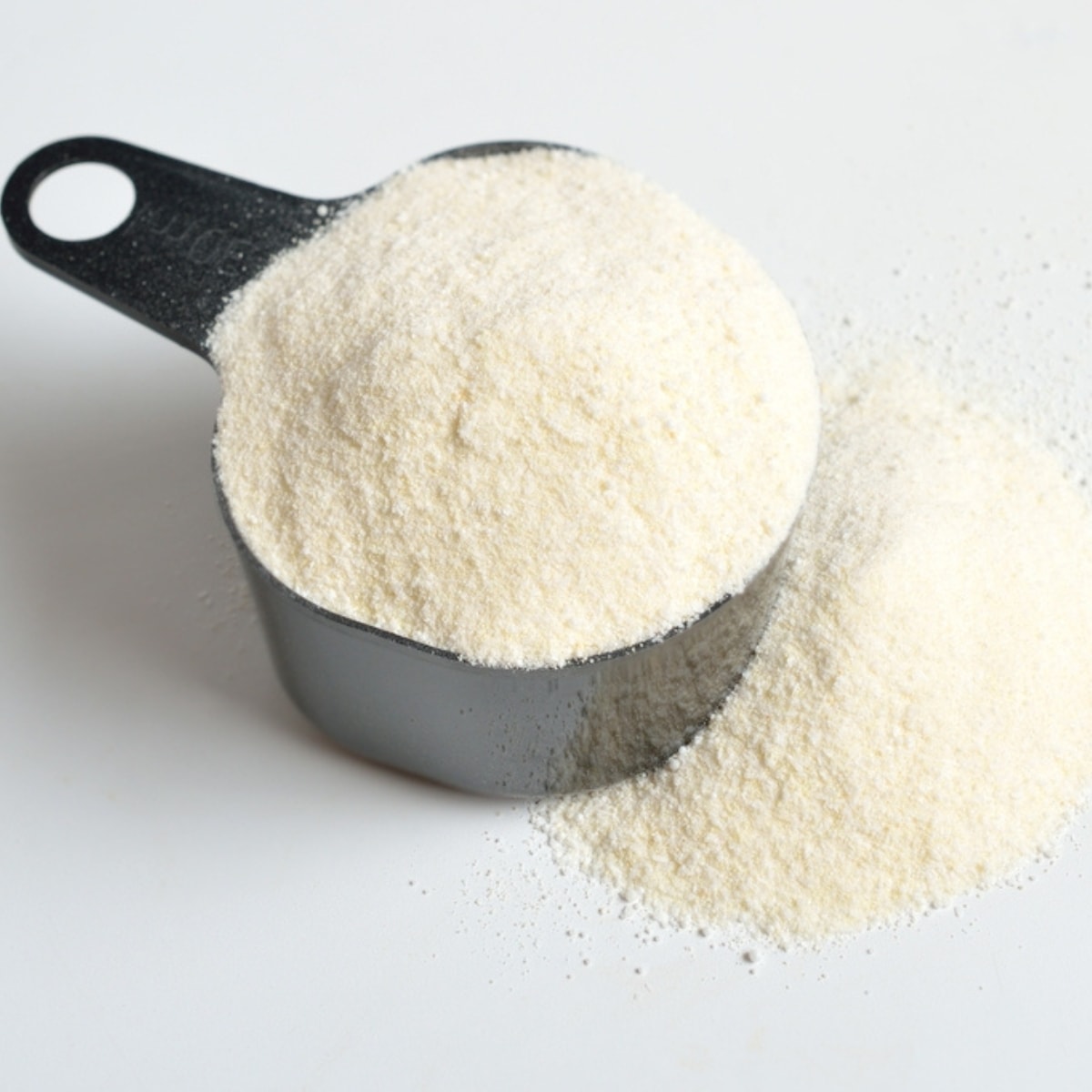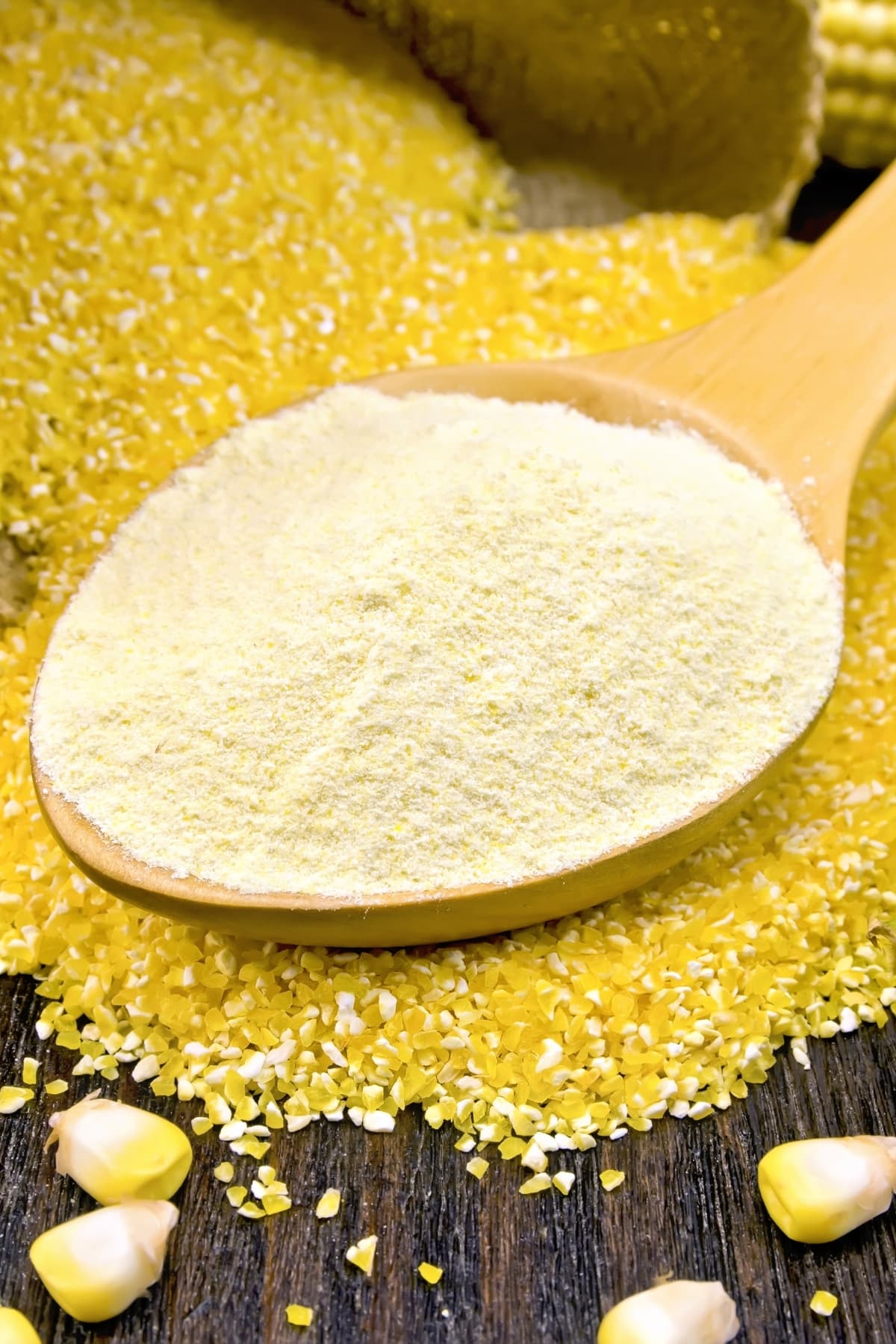The best corn flour substitutes include cornstarch, rice flour, and cornmeal.
You can also try all-purpose, whole wheat, and potato flour in a pinch.

Plenty of alternatives are waiting to step in and save the day when you realize you don’t have corn flour on hand.
From pantry staples to potato flour and even ground flaxseed, you’ll never run out of options.
Sift through these corn flour substitutes so you’re never caught off-guard in the kitchen again.
What Is Corn Flour?
Corn flour is finely milled flour crafted from dried whole corn kernels.
It includes the entire corn kernel: hull, germ, and endosperm. It has earned its place as a whole grain flour.
Depending on the corn variety, it can showcase shades of yellow, white, or even blue. And since it’s gluten-free, it’s ideal for dietary sensitivities.
And the best part? Corn flour packs a nutritional punch. It contains beneficial components like fiber, protein, starch, vitamins, and minerals.
With corn flour, you add subtle flavor and texture with a touch of nutrition.
Best Substitutes for Corn Flour

1. Cornstarch
Cornstarch is the superhero of thickening agents. It’s a white, powdery substance derived from the endosperm of the corn kernel.
This substitute has the same consistency as corn flour because it forms a translucent, lump-free mixture.
It thickens at a higher temperature and has a glossy finish. This substitute is ideal for gravies, sauces, and stir-fries.
How to substitute: Use a 1:1 ratio when replacing cornflour. You may still need to mix cornstarch with water in specific recipes.

2. Rice Flour
Ground from rice grains, this fine flour can step in for corn flour, especially if you’re gluten-sensitive.
It thickens sauces smoothly but has a slightly grainier texture. It’s ideal for recipes that demand a gentle touch. It’s often found in pudding recipes, soups, and gluten-free baked goods.
As a tip, it’s perfect for making batter for frying, giving a crispy, light finish.
How to substitute: Use a 2:1 ratio when replacing corn flour, so twice as much rice flour.

3. Cornmeal
The rustic cousin of corn flour, cornmeal offers a more textured, hearty feel.
Its granular texture isn’t the best for a silky-smooth sauce, as it’s made from ground, dried corn.
But it can be a delightful alternative in recipes that celebrate graininess. Think polenta, cornbread, or muffins! If a recipe requires corn flour and you only have cornmeal, use a food processor to make it finer.
Remember, it’ll add a certain grittiness.
How to substitute: Use a 1:1 ratio when replacing corn flour.

4. All-Purpose Flour
This is the ever-reliable jack of all trades! While denser than cornflour’s thickening power, all-purpose flour can fill in.
It gives sauces and gravies a slightly opaque look. When using it as a substitute, remember to use double the amount of corn flour suggested.
For cooking dishes, you can make a roux by cooking it with fat first to avoid a floury taste. It’s versatile and can fit into pies, soups, stews, and more.
How to substitute: Use a 2:1 ratio when substituting for corn flour.

5. Whole Wheat Flour
This is a wholesome and hearty alternative. Ground from the entire wheat grain, whole wheat flour has a nuttier, richer flavor.
As a thickener, it works similarly to all-purpose flour. But remember, it will give your dishes a deeper hue and a slightly wheat-like taste.
It’s ideal for rustic dishes like stews, bread, or casseroles. Remember to use more than corn flour, and embrace its earthy charm!
How to substitute: Use a 2:1 ratio when replacing corn flour. Double the amount of corn flour suggested.

6. Potato Flour
This spud’s for you! Potato flour is made from ground dried potatoes and retains its source’s earthy, comforting flavor.
As a corn flour substitute, it retains moisture. It’s perfect for bread, rolls, and even pancakes. It gives a soft, moist crumb to baked goods.
For thickening, it’s pretty powerful. Ensure you introduce it gradually to your sauces or gravies, whisking it constantly to avoid clumps.
How to substitute: Use a 1:1 ratio of equal amounts to the corn flour needed.

7. Arrowroot Powder
It’s a tropical gem! Extracted from the arrowroot plant, it’s a popular starch you can use as a substitute.
It’s a favorite for its clear, gel-like consistency and neutral taste. It’s similar to cornstarch in potency, so you can swap it at a 1:1 ratio.
Arrowroot shines in fruit glazes, puddings, and pie fillings. Plus, it gives a glossy finish without affecting the original flavor.
How to substitute: Use a 1:1 ratio of equal amounts to the corn flour needed.

8. Self-Rising Flour
This is the rising star of the kitchen! This flour is basically all-purpose flour with added baking powder and salt.
As a thickening agent, it’s less ideal due to those extra ingredients. However, if it’s all you have, adjust the salt content of your dish.
It works well in baked goods requiring a bit of lift.
How to substitute: If you’re using it as a batter, use a 1:1 ratio of equal amounts to the corn flour needed. For thickening soups and sauces, double the amount of self-rising flour.

9. Tapioca Flour
Straight from the cassava root, tapioca flour, or tapioca starch, is a smooth operator.
Its thickening power is close to cornstarch, creating a clear, glossy finish. This flour is especially loved in thickening fruit fillings since it can handle acidic ingredients well.
It gives a delightfully chewy texture to baked goods, making it a favorite in gluten-free recipes. Tapioca flour helps ingredients bind together without using gluten.
How to substitute: Use a 1:1 ratio of equal amounts to the corn flour needed for thickening. For baking and breading, the substitutions differ based on your desired texture.

10. Sorghum Flour
Sorghum flour, derived from the age-old grain sorghum, adds a sweet, nutty flavor to your dishes. It’s gluten-free, making it a winner in special dietary baking.
As a thickener, it’s more subdued and less predictable than corn flour. But it brings a unique depth of flavor, and it’s packed with vitamins and minerals.
It’s suited for breakfast recipes like pancakes, waffles, or even flatbreads, where its distinct taste can shine.
How to substitute: Use a 1:1 ratio of equal amounts to the corn flour needed.

11. Ground Flaxseed
This tiny seed packs a punch! Ground flaxseed, often termed flax meal, boasts a unique gelling property.
When mixed with water, it forms a gel-like consistency to mimic the thickening power of corn flour.
Besides its thickening prowess, flaxseed brings a nutty flavor and a powerhouse of omega-3 fatty acids.
Use it sparingly to thicken sauces or gravies, and be prepared for a slightly grainy texture.
How to substitute: Use a 1:1 ratio of equal amounts to the corn flour needed.

12. Masa Harina
Masa harina is flour made from hominy: corn kernels treated with alkali. It has a distinctive corn flavor and is the backbone of tamales and tortillas.
As a corn flour substitute, it imparts a unique corn-forward taste. Its thickening capability is somewhere between cornmeal and cornstarch.
It’s best suited for dishes where that maize flavor is welcomed. Think soups, stews, or certain types of bread.
How to substitute: Use a 1:1 ratio of equal amounts to the corn flour needed. You may need to adjust it based on specific recipes.

13. Guar Gum
Guar gum is derived from guar beans and is a powerhouse of thickening.
It’s used in small quantities and can thicken a dish quickly. Odorless and tasteless, it doesn’t interfere with the flavors of your recipe.
It’s gluten-free and improves the texture of baked goods. But you can also thicken sauces, dressings, and homemade ice creams.
Remember, a little goes a long way, so start with a small pinch and build from there.
How to substitute: Use only a fraction to replace corn flour with guar gum. Begin by using 1/8 of the specified cornflour quantity.
Can You Use Plain Flour Instead of Corn Flour?
Yes, you can substitute plain (all-purpose) flour for corn flour, but there are nuances to remember.
You need twice the amount of plain flour for the same thickening effect as corn flour. Plain flour results in a cloudier texture in sauces compared to the clear gloss of corn flour.
It also introduces a “floury” taste if not cooked sufficiently. Plain flour is more prone to clumping. If used in baking, it will alter the baked goods’ texture.
To prevent clumping, mix plain flour with cold water to make a paste before adding it to dishes. Adjust your recipe accordingly when making the switch.
Tips for Choosing the Best Corn Flour Substitute
Do you want to discover the best fit for your culinary creations? Keep these tips in mind to find the perfect substitute:
- Purpose matters. Cornstarch or arrowroot powder might be ideal if you need a thickener for a sauce. For baking, flours like all-purpose or whole wheat might be more fitting.
- Be sensitive. Consider gluten-free alternatives like rice flour, potato flour, tapioca flour, or sorghum flour.
- Flavor is king. Some substitutes will add a distinct taste. For example, masa harina has a notable corn flavor, while ground flaxseed brings a nutty undertone.
- Think about texture. Consider the final consistency you desire. There might be better choices than cornmeal if you want a silky-smooth sauce due to its grittiness.
- Keep things transparent. Ingredients like cornstarch and arrowroot powder offer a clear, glossy finish as thickeners. It might be preferable for some dishes.
- Watch the temperature. Some alternatives don’t react well at high temperatures and might break down. So, it’s essential to know the heat limits of your substitute.










